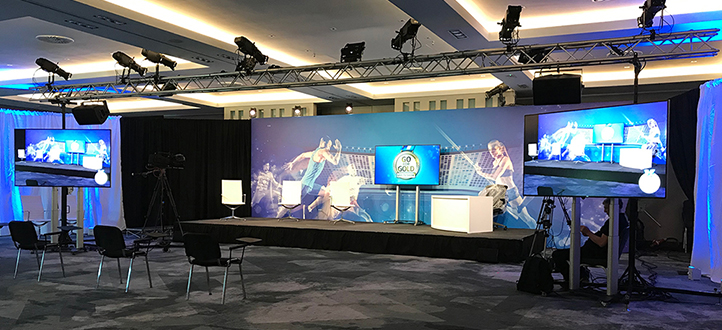Exploring the Benefits and Disadvantages of Static Frame and Portable Display Screens for All Viewing Experience
Exploring the Benefits and Disadvantages of Static Frame and Portable Display Screens for All Viewing Experience
Blog Article
When it pertains to enjoying movies, displays, or gaming, the kind of projection display used can significantly affect the watching experience. Two popular choices are fixed frame displays and portable projecting displays. Each type has its unique set of benefits and drawbacks that can influence which option is most suitable for a particular scenario. Understanding these distinctions can help people and organizations make knowledgeable decisions about their viewing setups.
Stationary projecting screens are designed to be constantly mounted in a particular location. A primary of the key benefits of fixed frame screens is their capability to provide a smooth, flat surface for displaying pictures. This evenness ensures that the picture quality is sharp and clear, which is especially crucial for high-definition content. Additionally, fixed frame screens often feature with a dark frame that enhances differentiation and causes the displayed picture pop more. This kind of display is perfect for residential cinemas or dedicated display rooms where the setup will not change frequently.
Conversely, mobile projection screens offer flexibility and ease of use. These displays can be readily assembled and dismantled, making them ideal for occasions that demand mobility, such as conferences, educational settings, or al fresco film nights. Portable displays come in multiple sizes and styles, including tripod and collapsible choices, allowing users to choose an option that meets their requirements. The capability to transport these displays renders them a favored option for people who require to present in different places or for those who do not have a permanent space for a fixed screen.
Nonetheless, there are some drawbacks to both types of displays. Stationary screens can be more expensive and require professional installation, which may not be feasible for everyone. Additionally, once mounted, they cannot be moved easily, limiting their application to a single place. On the flip side, mobile displays may not offer the equivalent level of image quality as fixed frame screens. They can sometimes have wrinkles or folds that affect the display, particularly if they are not set up properly. This can be a worry for those who value image clarity over convenience.
An additional factor to consider is the space available for the screen. Stationary displays need a specific area with enough surface space and suitable lighting conditions to enhance the viewing experience. This can be a constraint for those living in smaller homes or flats. Mobile screens, however, can be used in various environments, from spacious theaters to cozy sitting areas. This flexibility makes them a practical choice for numerous individuals, especially those who may not have a permanent setup.
In conclusion, each stationary and portable projection screens have their distinct advantages and challenges. Fixed frame displays excel in providing high-quality images and a polished look, making them suitable for specific viewing spaces. On the flip side, check that mobile screens offer versatility and convenience, making them ideal for on-the-go displays and occasions. By weighing the advantages and drawbacks of both kind, individuals and organizations can select the projecting screen that best fits their particular requirements and enhances their viewing experience.